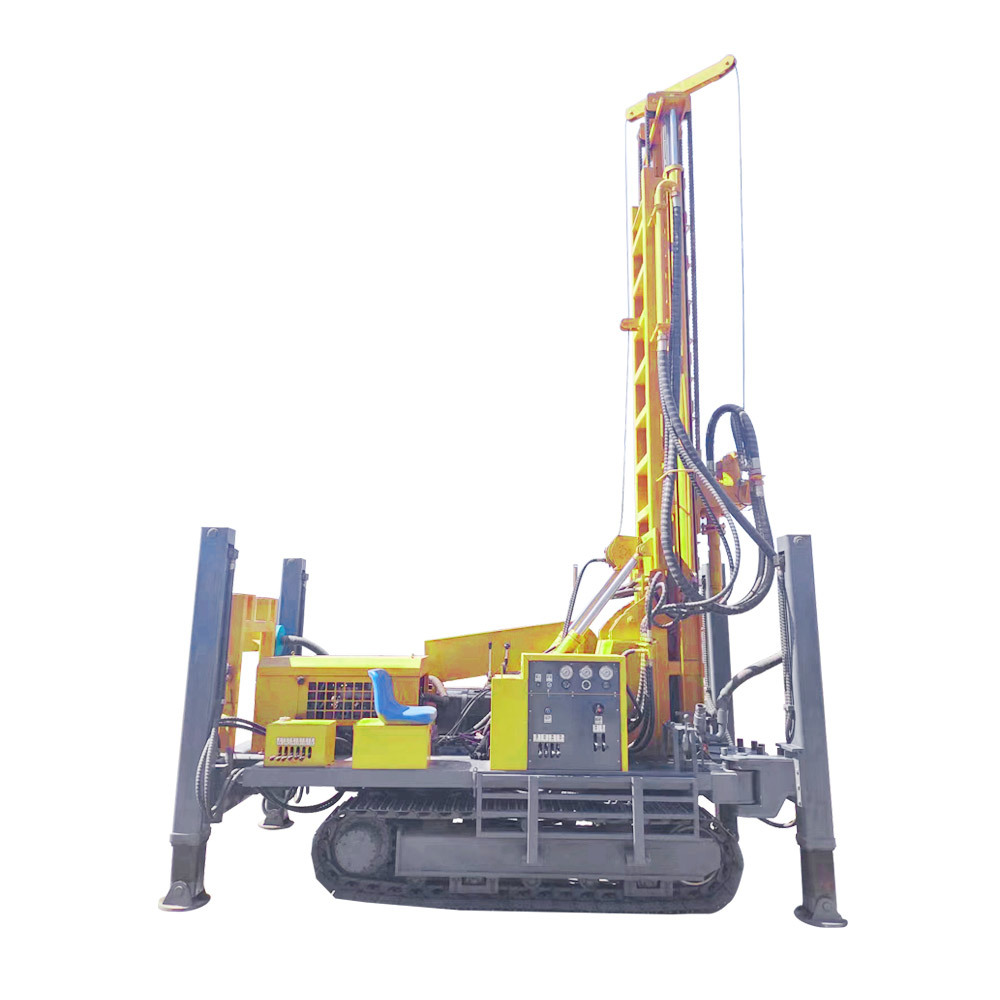The Technology Behind Modern Exploration Drilling Rigs: Innovations and Advancements
Oct 07,2025

The Technology Behind Modern Exploration Drilling Rigs: Innovations and Advancements
Table of Contents
- 1. Introduction to Exploration Drilling Technology
- 2. Historical Evolution of Drilling Rigs
- 3. Types of Exploration Drilling Rigs
- 4. Key Components of Modern Drilling Rigs
- 5. Technological Innovations in Drilling
- 6. Safety Enhancements in Drilling Operations
- 7. Environmental Considerations in Exploration Drilling
- 8. The Future of Exploration Drilling Technology
- 9. Frequently Asked Questions (FAQs)
- 10. Conclusion
1. Introduction to Exploration Drilling Technology
The exploration drilling industry plays a vital role in resource extraction, particularly in locating oil, natural gas, and minerals. Modern exploration drilling rigs are a testament to engineering prowess, incorporating advanced technologies to enhance efficiency, safety, and environmental stewardship. As demand for these resources grows, the technology behind drilling rigs evolves to meet the industry's challenges, leading to innovative solutions that redefine how we approach subsurface exploration.
2. Historical Evolution of Drilling Rigs
The history of drilling rigs dates back centuries, but significant advancements have occurred over the past century. Initially, simple hand-operated tools were employed, giving way to steam-powered rigs in the early 1900s. The introduction of rotary drilling marked a pivotal moment, allowing for deeper and more efficient drilling processes. Over the decades, advancements in materials and technology have led to the sophisticated exploration drilling rigs we see today, equipped with powerful engines and advanced data collection systems.
3. Types of Exploration Drilling Rigs
Understanding the different types of exploration drilling rigs is crucial for grasping the technology that underpins modern drilling operations. Each type is designed for specific environments and applications.
3.1. Land Rigs
Land drilling rigs are specifically built for terrestrial applications. These rigs are designed for versatility and mobility, able to operate in diverse environments, from deserts to forests. They employ various configurations, including trailer-mounted rigs and self-propelled units. The key to their efficiency lies in their ability to rapidly transition between drilling locations, minimizing downtime and maximizing productivity.
3.2. Offshore Rigs
Offshore exploration drilling rigs operate in marine environments, often in deep water. These rigs are significantly more complex due to the challenges posed by the ocean. There are several types of offshore rigs, including semi-submersibles, drillships, and jack-up rigs. Each type is equipped with specialized technology to withstand harsh marine conditions while ensuring the safety of personnel and equipment.
4. Key Components of Modern Drilling Rigs
The efficiency and functionality of exploration drilling rigs depend on their various components. Understanding these key components is essential for appreciating the technology behind modern rigs.
4.1. The Drill String
The drill string is a crucial component of drilling operations, comprising a series of pipes that connect the surface drilling rig to the drill bit. This assembly facilitates the transmission of drilling fluid and rotational force to the bit, enabling the rig to penetrate the earth's crust. Innovations in drill string design have improved strength and durability, allowing for deeper drilling and more complex well designs.
4.2. Power Systems
Modern drilling rigs require robust power systems to operate efficiently. These systems often utilize diesel engines or electric motors, coupled with advanced generators. The power systems are designed to provide consistent energy, ensuring that all rig components, from the drill bit to the hydraulic systems, function optimally. Innovations in hybrid power systems are also emerging, reducing fuel consumption and emissions.
4.3. Control Systems
Control systems are at the heart of modern drilling operations, integrating various technologies to enhance operational efficiency. These systems use advanced software and sensors to monitor drilling parameters in real-time, enabling operators to make informed decisions quickly. Automation within these systems helps reduce human error and improve safety, streamlining the drilling process.
5. Technological Innovations in Drilling
The exploration drilling industry is continuously evolving, with numerous technological innovations paving the way for more efficient and effective drilling practices.
5.1. Automation and Robotics
Automation is revolutionizing the drilling industry by minimizing the need for manual labor and enhancing safety. Robotic systems can perform repetitive tasks, reducing the risk of accidents and increasing efficiency. Automated drilling systems can adjust parameters in real-time based on data analysis, optimizing performance and reducing operational costs.
5.2. Data Analytics and IoT
The integration of data analytics and the Internet of Things (IoT) into drilling operations has changed how companies approach exploration. Sensors placed throughout the rig collect vast amounts of data, which can be analyzed to improve drilling strategies, predict failures, and optimize resource allocation. This data-driven approach enhances decision-making and operational efficiency.
6. Safety Enhancements in Drilling Operations
Safety is paramount in the exploration drilling industry. As technology advances, so do safety measures. Modern drilling rigs incorporate numerous safety features, including advanced blowout preventers (BOPs), automated shutoff systems, and real-time monitoring of drilling parameters. Training and simulation technologies also play a critical role in preparing personnel for emergencies, ensuring a safer working environment.
7. Environmental Considerations in Exploration Drilling
The exploration drilling industry faces increasing scrutiny regarding its environmental impact. Modern drilling technologies aim to minimize this impact through innovations such as improved drilling fluid formulations, reduced noise levels, and enhanced waste management systems. Sustainable practices are becoming more prevalent, with companies adopting technologies that reduce their carbon footprint and protect local ecosystems.
8. The Future of Exploration Drilling Technology
Looking ahead, the future of exploration drilling technology holds exciting possibilities. Continued advancements in automation, data analytics, and environmental sustainability are expected. Emerging technologies, such as artificial intelligence and machine learning, will further enhance drilling operations. As the industry adapts to changing demands and environmental considerations, the focus will remain on developing innovative solutions that ensure efficient and responsible resource extraction.
9. Frequently Asked Questions (FAQs)
What is an exploration drilling rig?
An exploration drilling rig is a specialized machine used to drill into the earth’s crust to locate and extract natural resources such as oil, gas, and minerals.
How does a drilling rig work?
A drilling rig operates by rotating a drill bit to penetrate the earth's surface, while simultaneously circulating drilling fluid to cool the bit, remove cuttings, and stabilize the borehole.
What are the different types of drilling rigs?
The primary types of drilling rigs include land rigs and offshore rigs, with various configurations such as semi-submersibles, drillships, and jack-up rigs for offshore applications.
What advancements are being made in drilling technology?
Advancements in drilling technology include increased automation, integration of IoT for data collection and analysis, and innovations in safety equipment and environmental practices.
How does automation improve drilling safety?
Automation reduces human error by taking over repetitive and hazardous tasks, while real-time monitoring and automated shutoff systems enhance operational safety.
10. Conclusion
The technology behind modern exploration drilling rigs showcases remarkable innovations that enhance efficiency, safety, and environmental stewardship. As the industry continues to evolve, it embraces advancements in automation, data analytics, and sustainable practices. Understanding these technological advancements enables stakeholders to appreciate the complexities of exploration drilling and its pivotal role in resource extraction. As we look to the future, ongoing innovation will ensure that drilling operations remain efficient and responsible, meeting the demands of a growing global population while safeguarding our planet.








